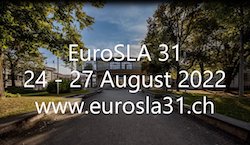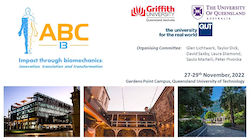11th International Conference on Computational and Experimental Methods in Multiphase and Complex Flow Tryp Atocha Hotel, Madrid
This is the 11th International Conference on Computational and Experimental Methods in Multiphase and Complex Flow in the very successful series which started in Orlando, Florida (2001), followed by meetings in Santa Fe, New Mexico (2003), Portland, Maine (2005), Bologna, (2007), the New Forest, home of the Wessex Institute (2009), Kos (2011), A Coruna (2013), Valencia (2015), Tallinn (2017) and Lisbon (2019).
The overall focus of this conference series is on using synergies between experimental and computational techniques to gain a better understanding of all classes of multiphase and complex flow. The meeting aims to facilitate the exchange of ideas and experiences directly and interactively, thereby promoting the development of knowledge in this increasingly important field.
Fluid dynamics processes in nature are predominantly multi-phased, i.e. involving more than one phase of a component such as liquid, gas or plasma. The range of related problems of interest is vast: astrophysics, biology, geophysics, atmospheric processes, and a large variety of engineering applications.
Multiphase fluid dynamics have generated a great deal of recent interest, leading to many notable advances in experimental, analytical, and numerical studies in this area. While progress is continuing in all three categories, advances in numerical solutions are likely the most conspicuous, owing to the continuing improvements in computer power and the software tools available to researchers. Progress in numerical methods has not only allowed for the solution of many practical problems, but also helped to improve our understanding of the physics involved. Many unresolved issues are inherent in the very definition of multiphase flow, where it is necessary to consider coupled processes on multiple scales, as well as the interplay of a wide variety of relevant physical phenomena.
Close interaction between numerical modellers and other researchers is indispensable to resolve many outstanding issues in multiphase flow. Theory and experiments are essential for validation and verification of numerical methods, with the latter providing new insights into the interpretation of experimental results and suggesting new directions of theoretical research.
![]()
⌛ Event Dates & Venue
💸 Website & Tickets
 Go to Event Website
Go to Event Website
◑ Topics | Categories
- Applied Science
- Computer
- Computer Engineering
- Computer Science
- Engineering
- Fluid Flow
- Mechanical Engineering
- Mechanics
Advertisements








